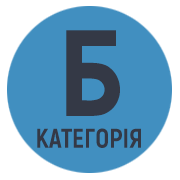TYPICAL ANALYSIS OF SUBJECT'S CREATIVITY AT THE INITIAL STAGE OF EDUCATIONAL AND PROFESSIONAL ACTIVITY
DOI:
https://doi.org/10.51547/ppp.dp.ua/2022.3.20Keywords:
subject, educational and professional activity, structure, figurative creativity, verbal creativity, factor, cluster.Abstract
This study is devoted to the actual problem of identifying, describing and properly scientific interpretation of the typological features of the subject's creativity at the initial stage of educational and professional activity. Achieving the goal of the research is implemented consistently due to the analysis of scientific and methodological prerequisites of the research problem, collection and processing of empirical research material, its cluster analysis, etc. It was found that it is advisable to study the creativity of the subject of educational and professional activity taking into account the micro-age specifics of its formation, considering separately the verbal and non-verbal components of creativity, and analyzing the typology of verbal and figurative creativity, which can describe in more detail the main groups of students according to their leading features of creativity. Taking into account the above-mentioned considerations, we clustered the values of the indicators of verbal and visual creativity of students separately at the beginning, during and at the end of studies in higher education institutions. Based on the results of the research, it can be stated that at the current stage of the formation of pedagogical psychology, creativity is understood as a motivated ability to innovate, which is determined by a number of non-linear, multi-level personal characteristics of a person (motivational-personal, cognitive-operational and external factors). However, at the beginning of studies verbal and figurative creativity of students or agree with each other in the specific type to which it corresponds the dominance of figurative creativity over verbal creativity, or the creativity of first-year students is compensated by one type one - the type with low indicators of figurative creativity corresponds to the types with increased indicators of verbal creativity creativity It is proven that in the other case, on the contrary, the type of first-year students with a low level of verbal creativity corresponds to types with increased indicators of imaginative creativity.
References
Гриненко І. В. Педагогічні умови розвитку креативності майбутніх учителів гуманітарного профілю у процесі фахової підготовки : автореф. дис… канд. пед. наук : 13.00.04. Хмельницький, 2008. 20 с.
Акімова О. В. Теоретико-методологічні засади формування творчого мислення майбутнього вчителя в умовах університетської освіти : автореф. дис. ... докт. пед. наук : 13.00.04. Тернопіль, 2010. 44 c.
Антонова О. Є. Теоретико-методологічні засади навчання обдарованих студентів у педагогічних університетах : автореф. дис. ... докт. пед. наук : 13.00.01. К., 2008. 43 c.
Кисельов К. C. Теоретичні засади дослідження креативності майбутнього педагога. Науковий вісник Миколаївського національного університету імені В. О. Сухомлинського. Психологічні науки. Миколаїв : МНПУ, 2016. № 1(16). С. 188–192.
Куцевол О. М. Теоретико-методичні основи розвитку креативності майбутніх учителів літератури. Вінниця : Глобус-прес, 2006. 348 с.
Психологічна енциклопедія / [авт.-упоряд. О. М. Степанов]. К. : «Академвидав», 2006. 422 с.
Роменець В. А., Маноха І. П. Історія психології XX століття: навчальний посібник. К. : Либідь, 2003. 990 с.
Саврасов М. В. Емоційно-мотиваційні складові креативності особистості : дис. ... канд. психол. наук : 19.00.01. Харків, 2012. 224 с. 9. Татенко В. О. Суб’єкт психічної активності в онтогенезі : автореф. дис…. докт. психол. наук : 19.00.01. К., 1997. 44 с.



